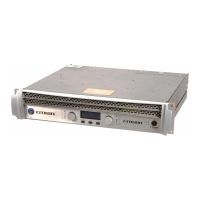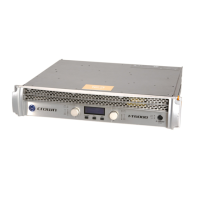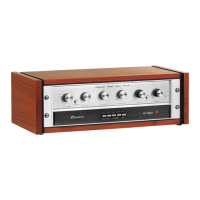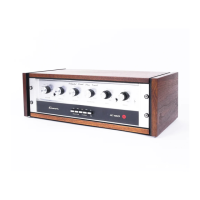I-Tech Series Power Amplifiers
Operation Manual page 23
4.5 TCP/IQ Networking
4.5.1 The Network Wizard
If you are setting up a dedicated audio network that is not part of another network, you can
use the Network Wizard to set up your network easily.
1. Open IQwic.
2. Select Setup > Network Wizard.
3. Follow the instructions on the screen.
4. When done, skip to Section 4.6.
4.5.2 Introduction
I-Tech amps connect directly to IQ networks with TCP/IQ protocol. This permits extensive
amp and speaker diagnostics and control by computer. For example, your amplifier’s DSP
functions can be controlled and monitored by a computer running IQwic software.
The computer connects to the amplifier on a TCP/IQ network via a Category 5 cable
plugged into the Network connector on the back of the amplifier. The TCP/IQ format uses
off-the-shelf, fast (100 Mb) Ethernet connections.
Every component in a TCP/IQ network is identified by a unique address. Before you set up
a TCP/IQ network with addressing, it’s important to understand all the terms involved. The
following glossary explains network terminology. It is arranged in logical order rather than
alphabetical order.
4.5.3 Glossary
Network: A group of interconnected components, such as a central computer, network
switching equipment, and other computers or devices.
TCP/IQ network: A network made of a computer, network switching equipment, and other
audio devices such as IQ-PIP cards plugged into power amps. Since each I-Tech amp con-
nects directly to a network, each amp is also a network component.
Subnet: A small network within a larger network. For example, a TCP/IQ audio network
might be a subnet of a venue’s network, which could include computers throughout the
building. Or an audio network might be divided into subnets. For example, one audio sub-
net might be for the house system and another audio subnet might be for the paging sys-
tem.
IP address: An identifier for a computer or device on a TCP/IP network. Each device in a
network has its own IP address to identify it. Example: 126.126.17.42. Networks using the
TCP/IP protocol route messages based on the IP address of the destination. An IP address
is made of four numbers separated by periods. Each number can be zero to 255. The last
number can never be a zero or 255. For example, 126.126.17.1 could be an IP address.
126.126.17.0 would not be a valid IP address.
A TCP/ IP or IP address has two parts: the NETWORK ID and the HOST ID. The NETWORK
ID identifies the network, and the HOST ID identifies either the subnet and device, or just
the device if there is no subnet.
The subnet mask is a code that indicates which part of the TCP/IP address is the
NETWORK ID and which part is the HOST ID. In subnet-mask code, 255 means “This part
of the address is the NETWORK ID”.
Example:
Suppose the IP ADDRESS of a device is 126.126.17.42
and the SUBNET MASK is 255.255.0.0.
That means, (126.126) is the NETWORK ID. The remaining set of numbers (17.42) is the
HOST ID. If your audio network stands alone (it is not part of a larger network) then the
HOST ID identifies each device in the network.
If your audio network is part of a venue’s larger network, your network is actually a sub-net-
work or subnet. In this case, the HOST ID can be further divided into two or more parts. The
first part is the SUBNET ID. The other part is the DEVICE ID. The first part of the HOST ID
identifies the subnet of your audio system, and the remaining part identifies the particular
device within that subnet.
So in this case, a complete IP address is in the form
NETWORK ID - SUBNET ID - DEVICE ID.
All devices in the network have the same network ID. All devices in a subnet have the same
subnet ID.
There are many resources available on the Internet for IP and subnet calculation. For a
stand-alone system, Crown has provided a worksheet of a tested configuration later in this
section.
DHCP (Dynamic Host Configuration Protocol): This is a protocol for automatically
assigning IP addresses to devices on a network. With dynamic (DHCP) addressing, a
device might have a different IP address every time it connects to the network. If a computer
is NOT connected to a network with a DHCP server, the computer will place a default net-
work ID into the TCP/IP address and Subnet Masks.
TCP/IQ does not use DHCP. A computer attached to a TCP/IQ network must have its IP
addresses assigned statically (manually).
4 Advanced Operation
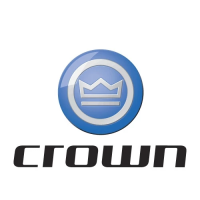
